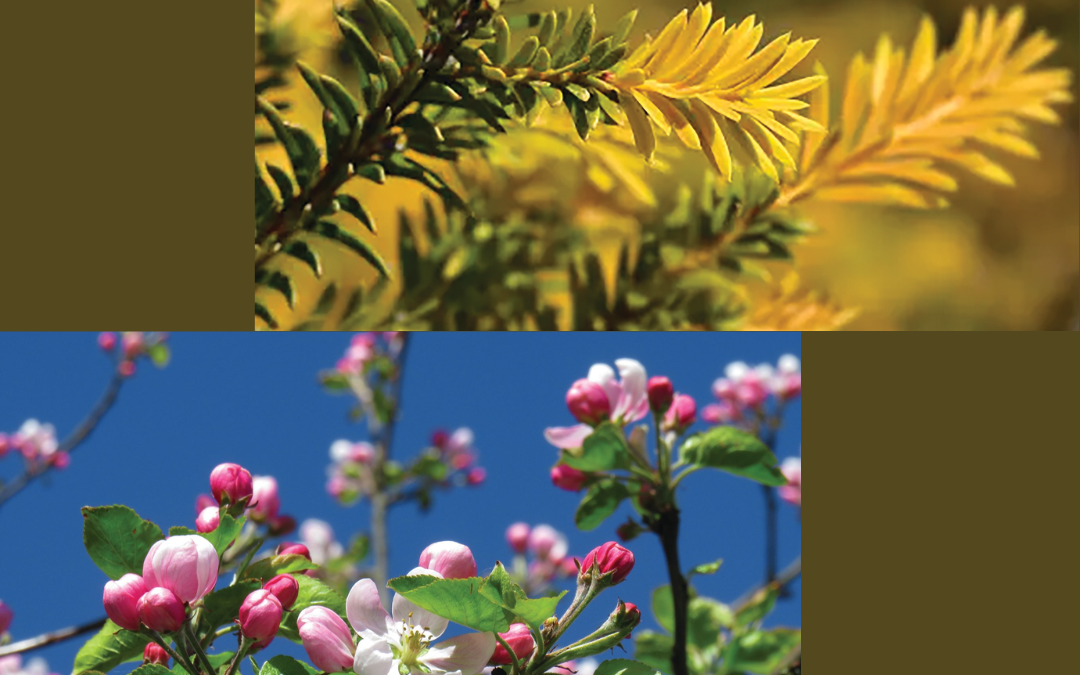If you’d like to incorporate trees into your garden, but space is tight, columnar – or fastigiate – trees that have a narrow upright habit, could be the answer. While standard trees tend to have fairly wide canopies, narrow trees can fit into corners or narrow spaces adding height, seasonal interest and biodiversity, without the width.
These vertical trees can be used in various ways in planting, whether as a stand- alone feature, in more formal lines along a boundary or path or either side of a door, or to provide striking vertical accents repeated through planting to creating a sense of rhythm. The tall spire-like habit also works well as a contrast to more rounded shrubs. As well as the more obvious choices, it’s surprising how many trees have fastigiate cultivars. Here are a few suggestions:
Upright Irish yew varieties have long been used for evergreen structure in traditional settings and avenues. For smaller gardens, try Cephalotaxus harringtonia ’Fastigiata’ a slow-growing, columnar relative of yew, either as a specimen or accent plant to punctuate planting border.
Italian cypress such as Cupressus sempervirens var. pyramidalis, are classically elegant evergreen fastigiate trees which work well repeated through Mediterranean planting to summon up holidays abroad.
Hornbeam tends to have a narrow habit and Carpinus betulus ‘Frans Fontaine’, is a particularly neat upright hornbeam with bright green leaves in spring turning yellow and orange in Autumn.
For drama, try purple beech Fagus sylvatica ‘Dawyck’, which has a naturally slim habit and will add fabulous dark foliage colour and texture to planting.
If spectacular autumn colour is your aim, try a Persian Ironwood such as Parrotia persica ‘Spire’ which a new narrow form that doesn’t get too big. The fabulous foliage is tinged with purple in the summer, turning yellow, orange and red later into the season. Liquidambar styraciflua ‘Slender silouette’ also has stunning autumn colour but gets taller.
There are also plenty of fabulous blossom trees which come in columnar forms. Along with cherries and apples, good options include Amelanchier alnifolia ‘Obelisk’ or hawthorn Crataegus monogyna ‘Stricta.’

